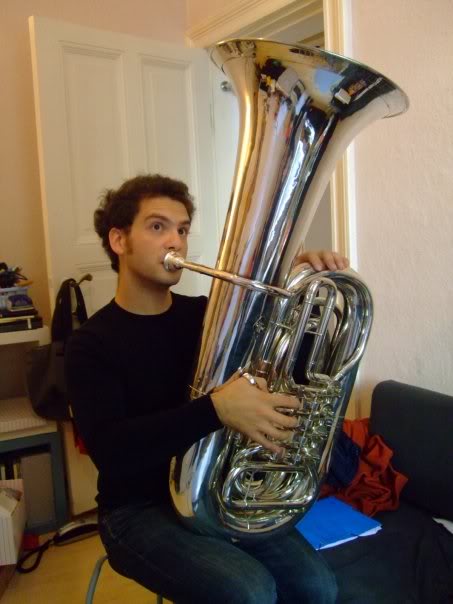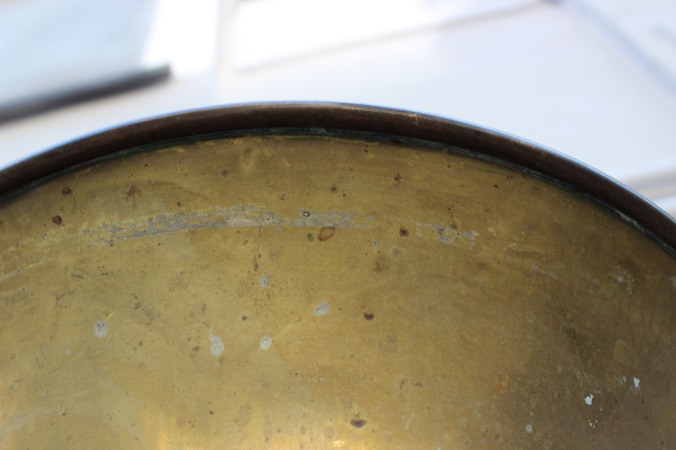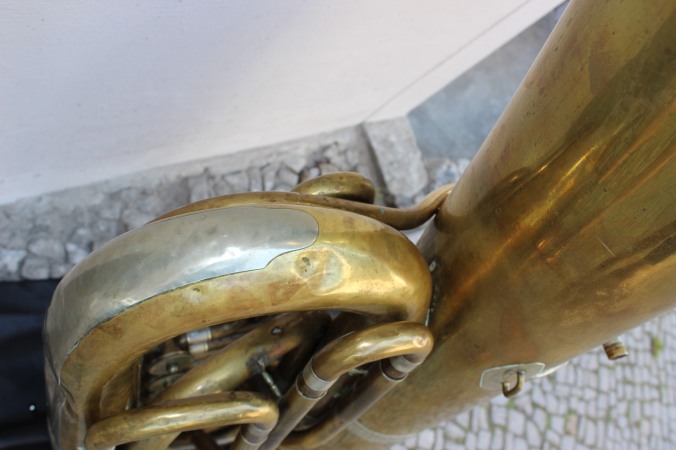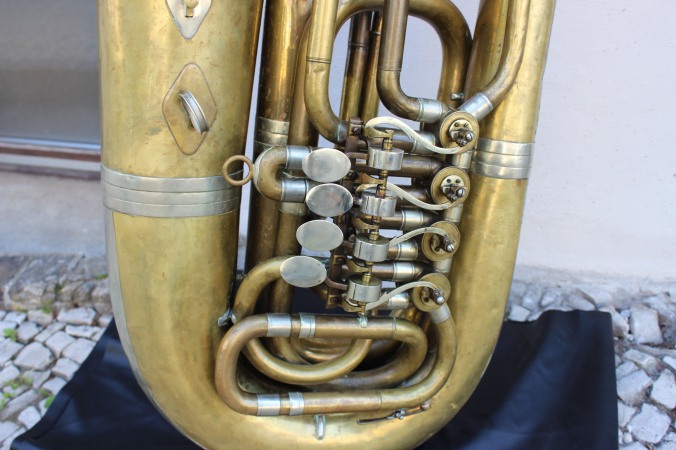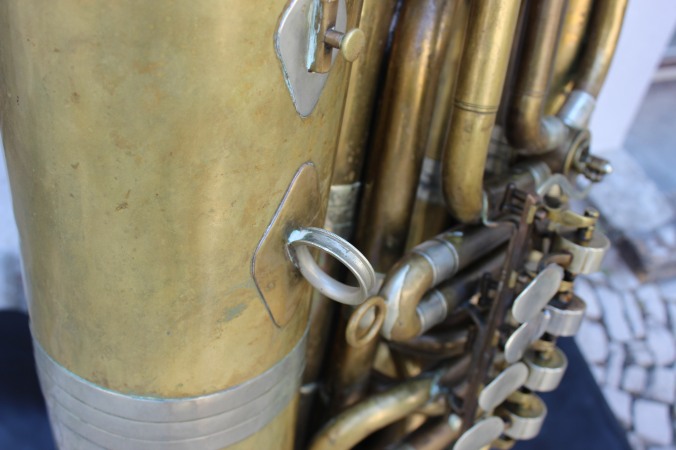ca.1935-40 Hess Musik Klingenthal in Sa: Kaiser Bb Tuba 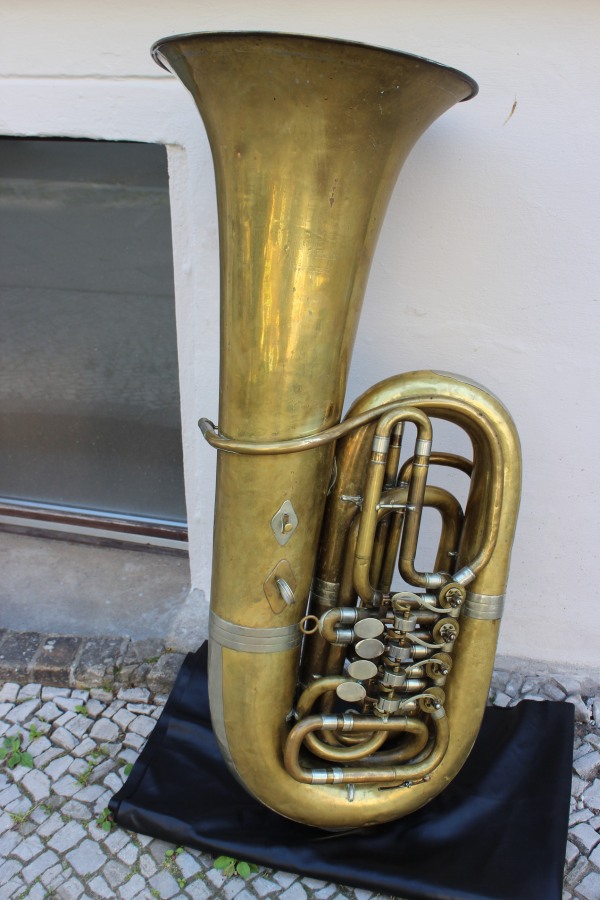
I occasionally come across tubas in my workshop that leave me confused as to their identity. The design says one thing, yet the name on the bell says something else. Often it’s decided that the tuba in question is simply a stencil of another brand or a chinese copy of a german tuba and so on and so on. However sometimes an instrument’s identity is not so simple. Take this 1930’s Hess Kaiser tuba for example. When the tuba first came in the workshop, I incorrectly assumed it was a pre WW2 Alexander tuba model 164 from Mainz. something like this:
So if Alexander is in Mainz, southwest Germany, and Hess is in Klingenthal, far east Germany on the border with the Czech Republic, how did a tuba design from the Alexander factory end up coming out of Hess’s factory?
First things first, a bit of background on Hess in Klingenthal:
The company Ernst Hess Nachf.(Nachf. means successor) was founded in 1872 as an accordion factory and a importer/dealer for other companies instruments in Kingenthal, Germany. In 1880 they were the only Vogtland instrument maker present at the world trade fair in Melbourne, Australia. Even with the advertising, they remained a small manufactor and dealer until the 1930s. In 1935 they started to produce brass instruments, followed in 1937 with saxophone production. After WW2 ended, the factory was absorbed into state ownership and became the Sachsichemusikinstrumentenfabrik, later VEB etc…(Thanks to Mario Weller of the Markneukirchen Musikinstrumenten Museum). VEB later becomes known as B&S…but that’s again a story for another day. Klingenthal by the way, is a rather beautiful German town on the border with the Czech Republic. Although a booming place before WW2, it’s a bit quieter these days, but well worth a trip.
So we know that Hess started production of brass instruments in 1935. From their perspective, they were an accordion factory, so it makes sense that they would have needed to hire brass makers. 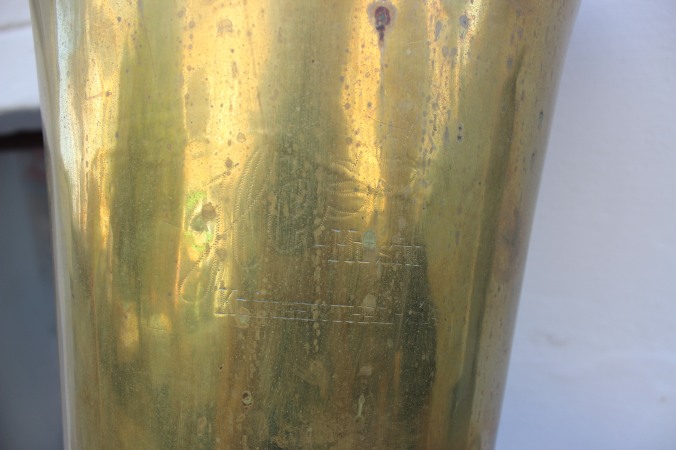 Which is where the company Alexander comes in, well not so much Alexander, rather someone who used to work there in the early 1930s. His name was Herr Crönlein, and he was a master craftsman at Alexander. Apparently at some point, Herr Crönlein decided to leave Alexander for Hess in the 1930s and in doing so, took his designs with him, including the kaiser tuba you see here. The name Crönlein will perhaps be familiar to french horn enthusiasts, as Crönlein also made an excellent version of the venerable Model 103 Doublehorn from Alexander.
Which is where the company Alexander comes in, well not so much Alexander, rather someone who used to work there in the early 1930s. His name was Herr Crönlein, and he was a master craftsman at Alexander. Apparently at some point, Herr Crönlein decided to leave Alexander for Hess in the 1930s and in doing so, took his designs with him, including the kaiser tuba you see here. The name Crönlein will perhaps be familiar to french horn enthusiasts, as Crönlein also made an excellent version of the venerable Model 103 Doublehorn from Alexander.
Here is a link to a Hess catalogue from 1938-thanks to Horn-o-copia! Notice on the first page, the endorsement of an orchestral tubist! Not quite the same tuba as our featured horn, but similar. The rotary valve King copy is hard to believe… https://drive.google.com/file/d/0B5-_7UCbLfDqTkhtdURMR2VFNUk/edit
And so we come to our featured tuba. Built in the later half of the 1930s, the tuba managed to survive war, scrap drives together with a multitude of blacksmith style repairs and seems to have been played continuously since. Unfortunately at some point, the bell kranz was severely damaged and replaced with a soldered on bell rim. While the horn still plays well, I would have loved to try it with the original kranz.
Another similarity to its Alexander sibling is the Bohemian style of valves. The usual Markneukirchen design has a small machined lip on the backing plate where the bohemian design sits flush against the casing. For valves built in the 1930s these were still tight and held good compression. 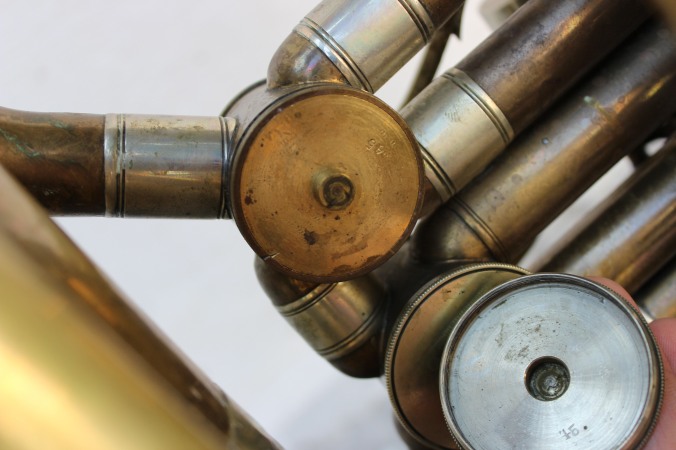 For a 110cm tall Kaiser tuba, what the Hess lacks in girth is made up in height. The tuba has a smallish body, but a very tall bell, and in fact feels higher than 110cm.
For a 110cm tall Kaiser tuba, what the Hess lacks in girth is made up in height. The tuba has a smallish body, but a very tall bell, and in fact feels higher than 110cm.
The paddle assembly is also quite wide and not for small hands. The 21.2mm valve bore is similar to Cervenys of the era. The catalogue mentions a 22mm bore option….
Playing impressions: The overall impression is one of practicality. The tuba was designed to get the job done and little else. There are no decorations, the engraving is plain. The slides are easy to get at, at least the ones you need. 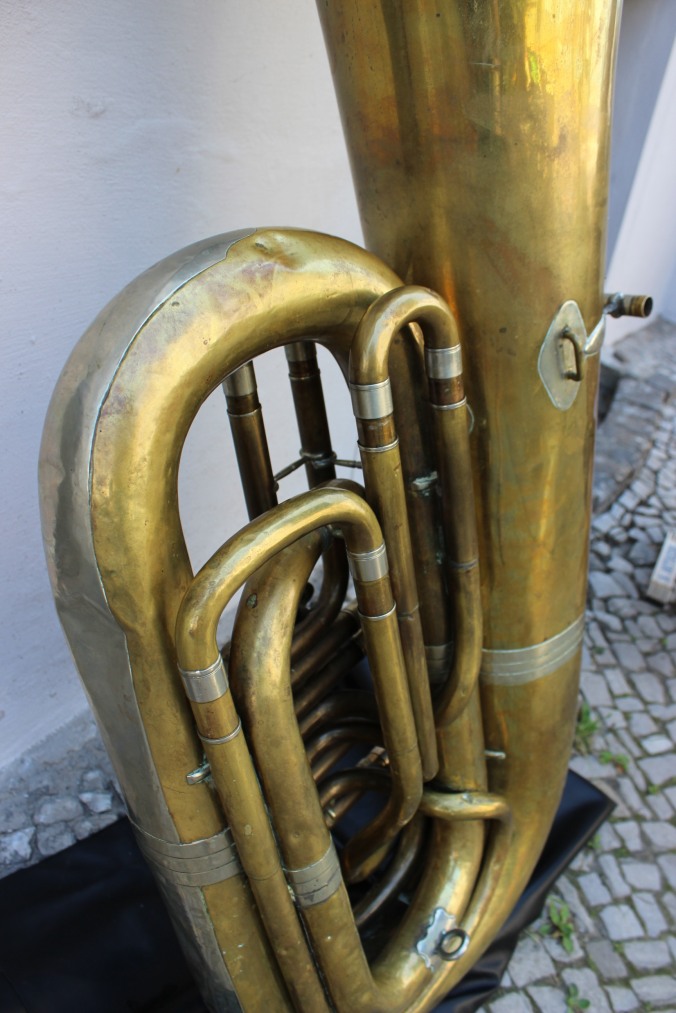
Like its Alexander cousins, getting the best out of the horn is not for the faint of heart. The receiver takes a extremely large shaft mouthpiece and an equally large amount of air. However, if you’re fit enough, it can shake the paint off the roof. Remarkably, the low range has little of the stuffiness of most kaiser tubas. The unevenness of the 3rd valve response was traced to a leak and was quickly sorted.
The one major difference between the Hess and the Alexander lies in the sound. While the Alexanders tend to have a somewhat warm and refined sound, the Hess is more brutal. It will growl and break the sound at the extreme dynamics(the missing Kranz perhaps). The Hess has a stronger taper in the leadpipe, unlike the Alexanders with almost no taper and perhaps this explains the edge in the sound. For certain pieces I would prefer the Hess over an Alexander kaiser.
Specs: 1930s Hess in Kingenthal Kaiser Bb Tuba 4 rotary valves, unlacquered
Bore: 21.20mm
Height: 110cm
